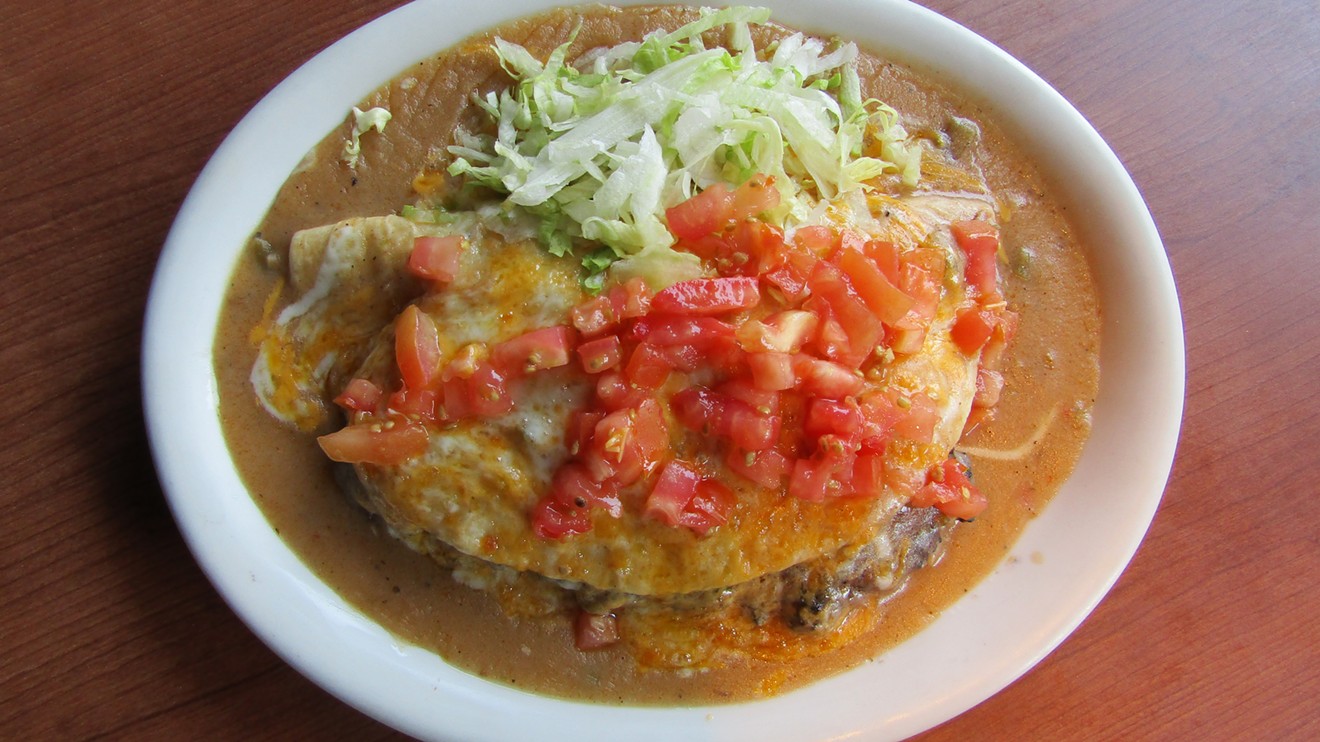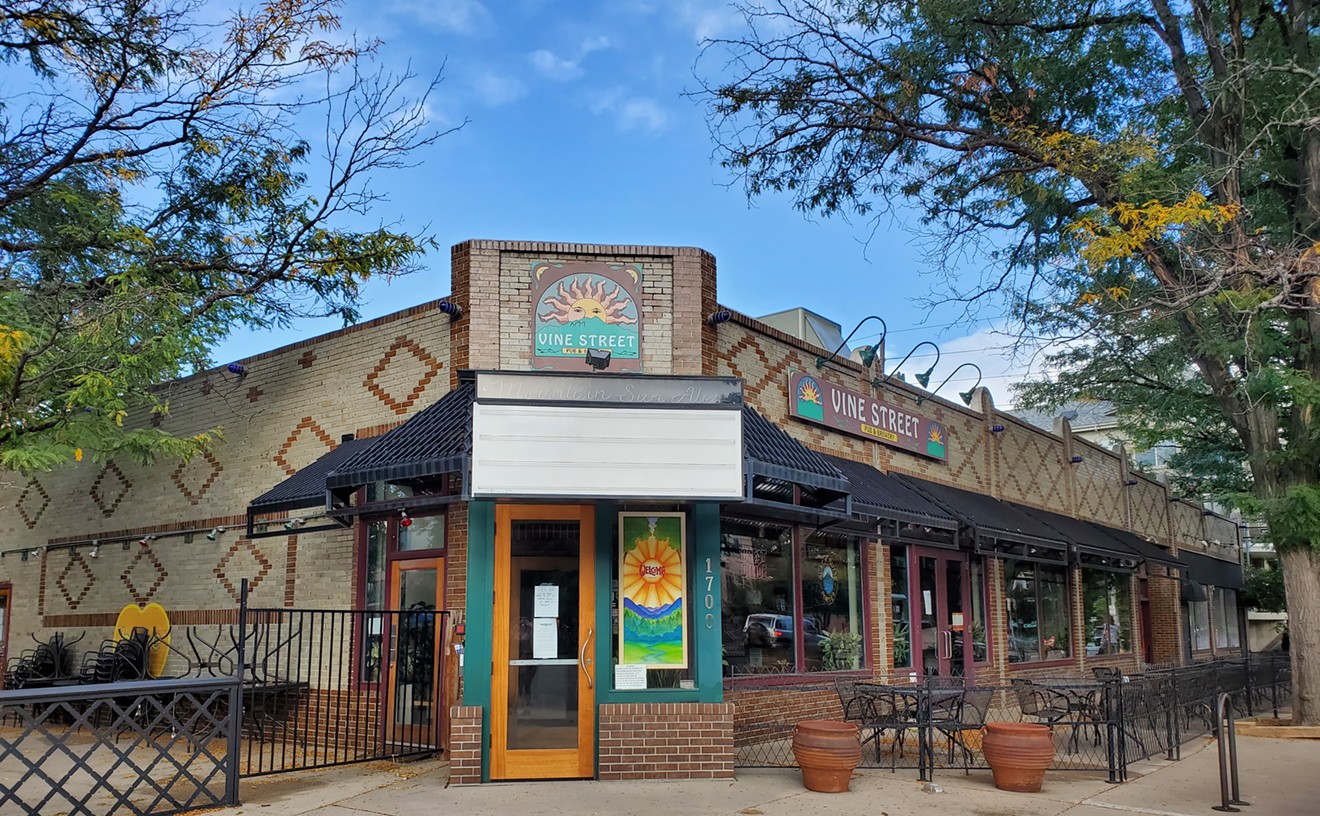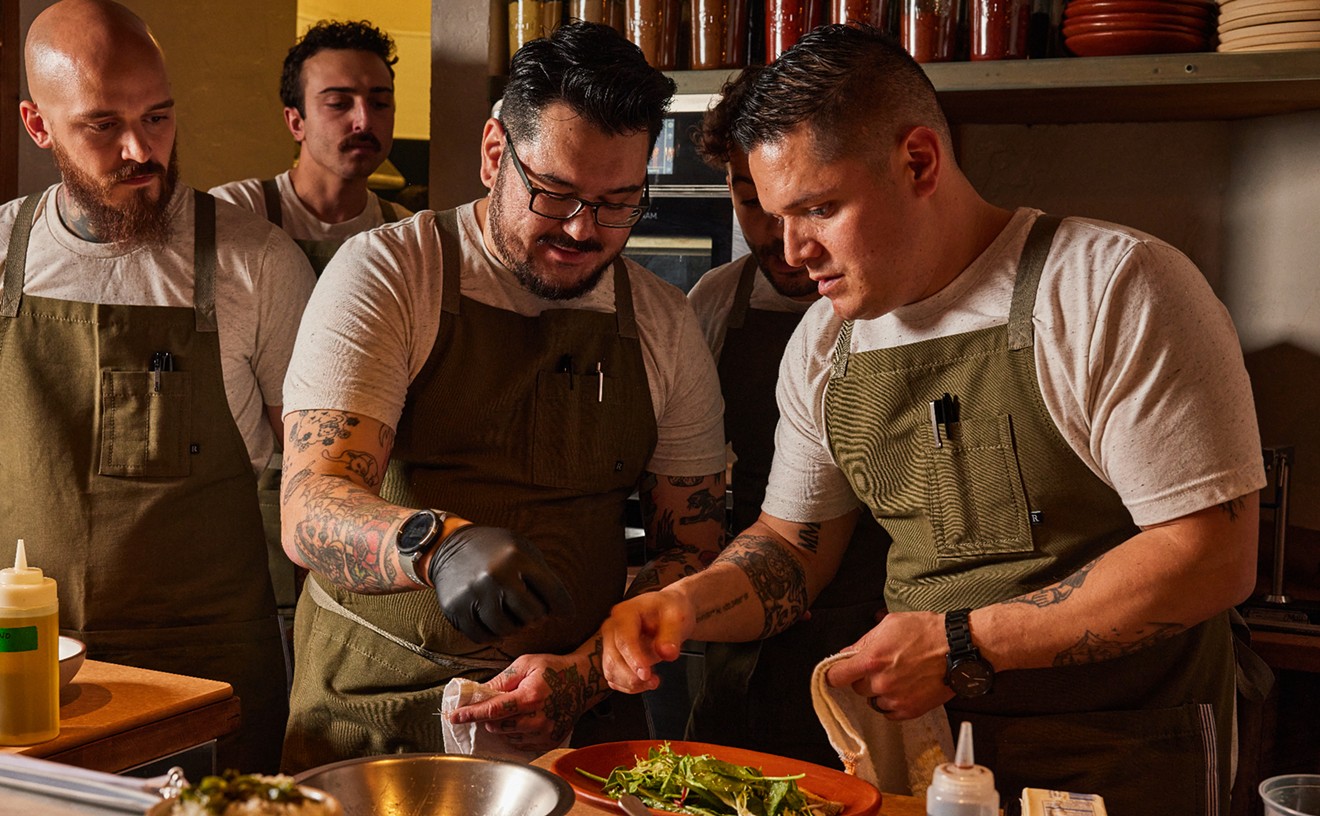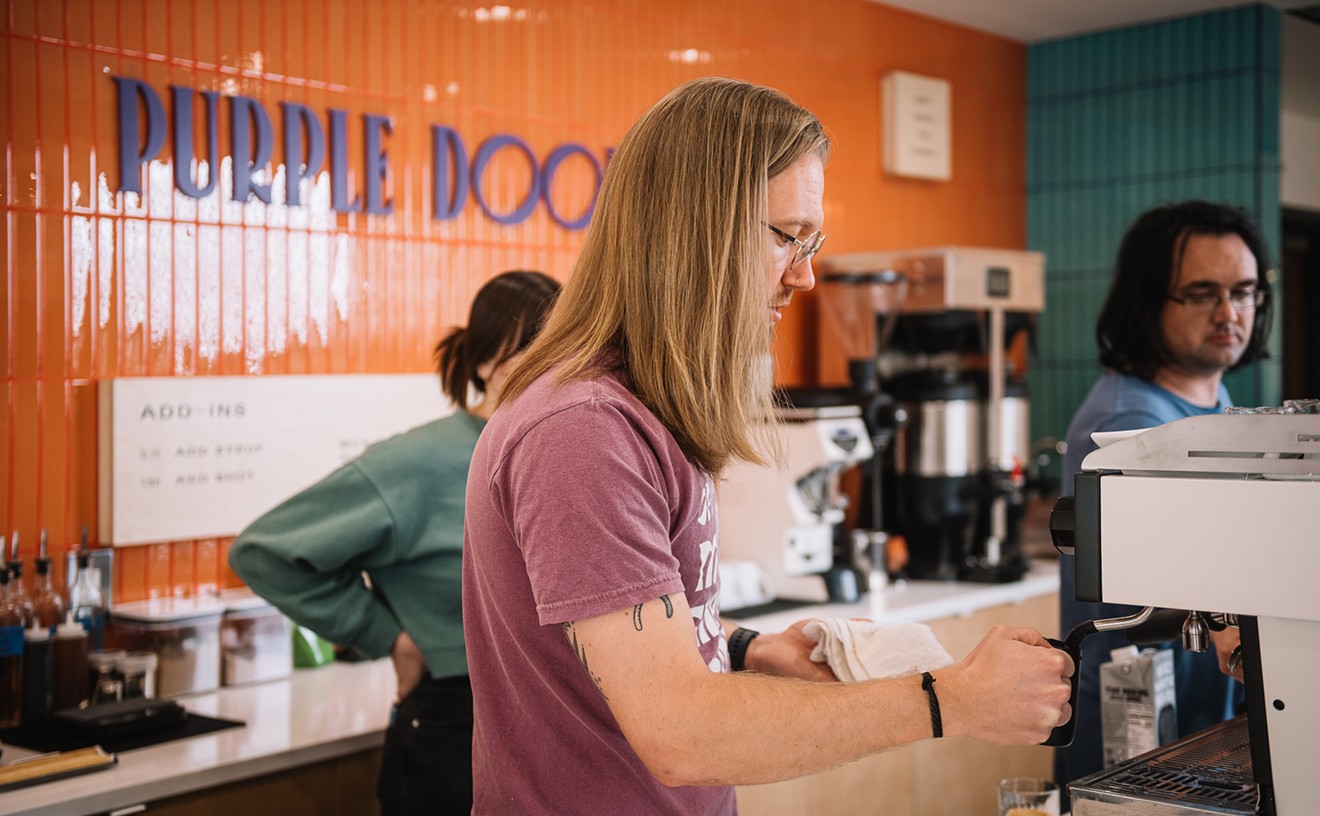But swaddle a grilled hamburger patty and some refried beans with that fluffy white blanket and, miraculously, the assembly is no longer a burrito: It's a Mexican hamburger.
In his 2012 book Taco USA, Mexican-food historian Gustavo Arellano writes that "the Mexican hamburger is the dish that best personifies the Mexican-American experience, a monument to mestizaje." Arellano had particular praise for the version found at Chubby's, best eaten with a handful of crunchy chicharrones thrown on top.
Chubby's version isn't the only notable Mexican hamburger in town; it's served in other old-school joints such as Las Delicias, La Fiesta and Mexico City Restaurant & Lounge. While it still resembles a burrito in each of these incarnations, it's invariably flatter, with the distinct taste of the grilled burger patty nestled inside. A shower of lettuce and tomato is customary, and sometimes scoops of sour cream and guacamole add to the delicious mess.
The burrito/burger mashup seems born more out of necessity and frugality than creativity; much like another Denver original, the toro pot (a burrito filled with ground beef and hash browns and smothered in chili con carne), it's likely the result of diner employees combining ingredients on hand into something cheap and filling. Credit for the invention has been attributed to a long-gone joint called Joe's Buffet, which served Mexican hamburgers at 753 Santa Fe Drive back in the 1960s. For a brief time in 2012, the space was resurrected as a music venue and eatery called the Cow, which touted its Joe's Buffet Mexican hamburger for those with long memories and a hankering for Den-Mex.

Los Mangos serves hamburguesas locas, like this one topped with pineapple, shrimp, avocado, mayo, grilled onions, bacon, lettuce, onion and tomato.
Mark Antonation
This style of hamburger looks more familiar than the tortilla-wrapped version; it comes on a bun, and the beef patty is clearly visible. But a multitude of toppings, usually with a butterflied and grilled hot dog or a slice of ham for a salty punch, take the hamburguesa far beyond fast-food-burger territory. At Los Mangos (920 South Federal Boulevard) or Hamburguesas Don Jesus (800 Decatur Street), ketchup, mustard and mayo are obligatory, but grilled pineapple, jalapeños, refried beans, guacamole or sliced avocado, bacon and even strawberries can be part of the impressive pile between the patty — pressed thin and fried hard — and the top bun. Whereas the Mexican hamburger is comforting and down-to-earth, the hamburguesa exists to wow and impress. The bold, spicy, salty explosion of flavors requires its own soundtrack of blaring music in a lively, chaotic setting.
There's not much crossover between the kinds of kitchens that serve the two, but in one family-owned cantina run for the past 28 years by Danette Calhoun, you can sink your teeth into both. La Fogata opened at 5670 East Evans Avenue in 1990, and Calhoun says the Mexican hamburger has been on the menu since day one.
That's a fairly brief slice of the dish's history in Denver; Calhoun recognizes that Mexican hamburgers go back much further. "I worked in my family's restaurant for many years before La Fogata, and we always served one," she recalls. She gained the Calhoun name through marriage, but she's originally part of the Aguirre clan, which founded Las Delicias. Various family members have since opened El Parral, D'Corazon and other eateries around the city.
At La Fogata, the Mexican hamburger isn't a cheap dish made with leftover ingredients. "We don't use a frozen patty," Calhoun explains. "We only use fresh ground beef that we shape ourselves." Topped with the restaurant's smooth, gravy-like green chile, it's a warming, filling and well-made mountain of food.
When I ask Calhoun if she's noticed the recent surge of oddly topped hamburguesas around the city, she points out that there's one on La Fogata's menu. "My family is from Durango, and we have a hamburger called La Norteña on the menu," she notes. "And it has a hot dog on it."
Durango seems as likely a place of origin for this style of hamburger as any, since beef is more prevalent in northern Mexico than in the southern states, and the region is close enough to the U.S. to absorb and adopt American foods like the hot dog (or wini, as you'll see it called on the menu at Don Jesus).
Mexican street-food slingers have a proclivity for eye-popping and entertaining food mashups: tamale-stuffed tortas, relleno-stuffed burritos, hot dog-topped burgers, to name just a few. What's next in the evolution of the Mexican hamburger? My hope is that someone will marry Den-Mex tradition with street-food style and put a tortilla-wrapped, bean-slathered beef patty between two buns, throw in a hot dog and then smother the whole thing, à la the Pueblo slopper, in blazing-hot green chile.













